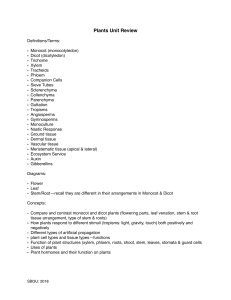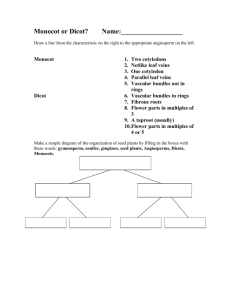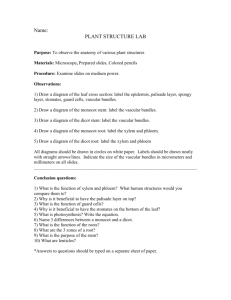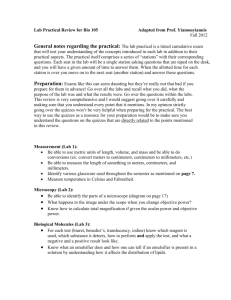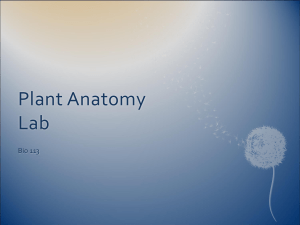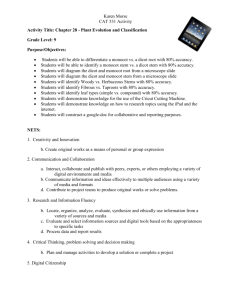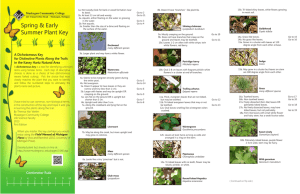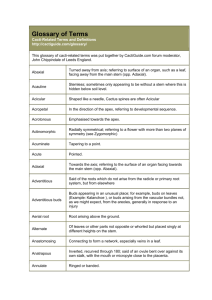Table 1 Physical Characteristics of Plants
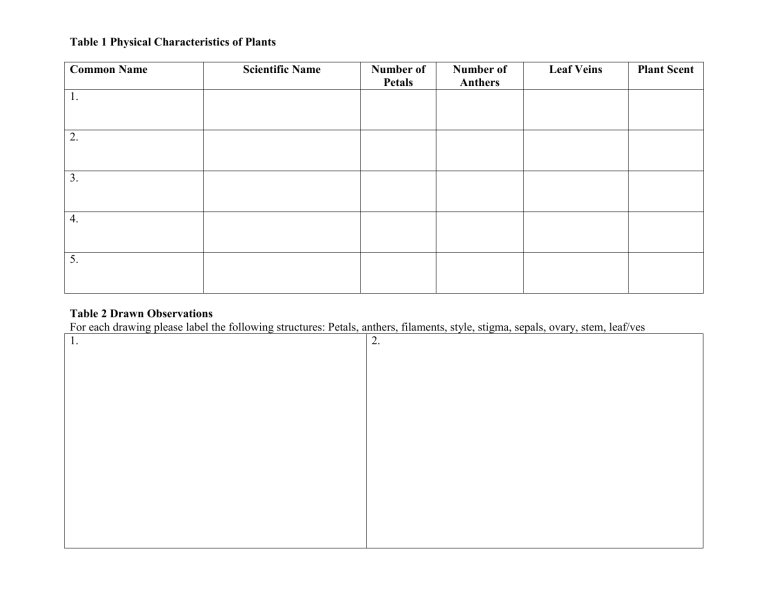
Table 1 Physical Characteristics of Plants
Common Name
1.
2.
3.
Scientific Name Number of
Petals
Number of
Anthers
Leaf Veins Plant Scent
4.
5.
Table 2 Drawn Observations
For each drawing please label the following structures: Petals, anthers, filaments, style, stigma, sepals, ovary, stem, leaf/ves
1. 2.
5.
3. 4.
5.
4.
3.
1.
2.
Table 3 Microscopic Observations
Plant Common Name Type of Stem (Monocot/
Dicot)
Description of Stem (vascular bundles scattered or arranged in ring)
Drawing of Stem (Label: vascular tissue, epidermis and if possible pith and cortex)
Flower Dissection Lab
Name:
Date:
Purpose: This lab will help familiarize you with the anatomy of a flower and allow you to be able to differentiate between monocot and dicot plants.
Hypothesis:
For each of the plants given hypothesize whether they are a monocot or dicot before beginning your investigation.
Plant 1:
Plant 2:
Plant 3:
Plant 4:
Plant 5:
Materials:
Slides
Cover Slips
Roses (variety of types and colors)
Viking Pom
Water (in small beakers)
Pipettes
Scalpels
Light Microscopes
Lily Asiatic
Mini Carnation
Alstroemeria
Procedure:
1.
Make your superficial observations of Plant #1. Record you observations in Table 1. (No cutting should take place).
2.
Make clear drawings of your flower. Use the plant reproduction sheet given to you earlier this week, or your book, to refer to specific plant parts that you are unsure of. Your picture does not need to be artistic but should be clear and neat. Labels should be made by a horizontal line connected to the structure and its label. There should be no arrows.
3.
To determine the stem type, use a new scalpel to cut a very thin section from your plant. Place the section on a slide and add a drop of water and a cover slip. Use a microscope and the lowest power to observe. Note: Because the stem is opaque it will be hard to see through stem at a higher power since
no light will be able to go through the image . Draw your stem in the space provided in table 2 and label as requested.
Questions:
1.
Why do flowers have such a pleasant scent? What would be the practical reason?
2.
What is the reason behind the evolutionary adaptation of flowers into bright colors?
3.
What is pollination?
4.
Which of the flowers you observed today will have the highest chance of being pollinated? Explain your choice.
5.
Which of the flowers you obser4ved today will have the lowest chance of being pollinated? Explain your choice.
Homework: Completion of Data, Errors, Conclusion and Revisions of your experiment. This should be include all of your data and clearly point to your conclusion as to whether each plant is a dicot or monocot and evidence to support your conclusion. Please refer back to your hypothesis and bring up clear points of revision and error from your materials or experimentation. Be sure to include information about all 5 of the plants that were observed today.
